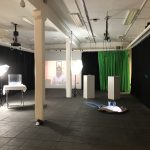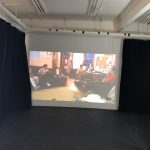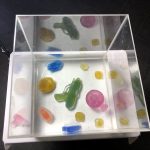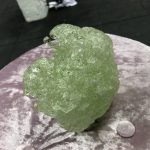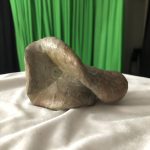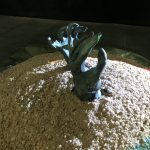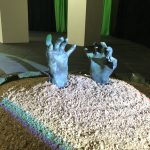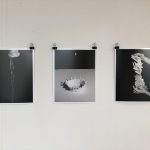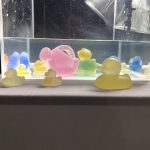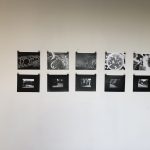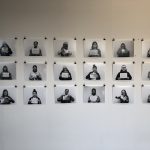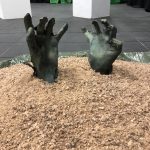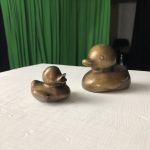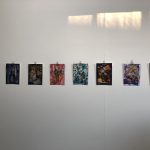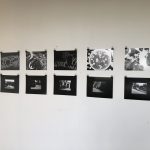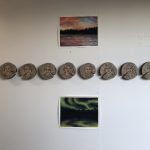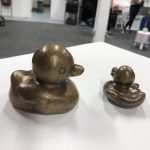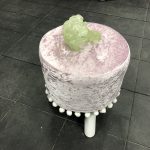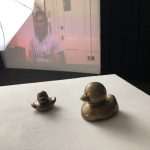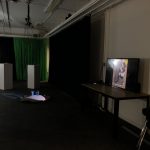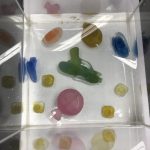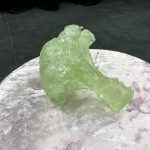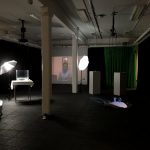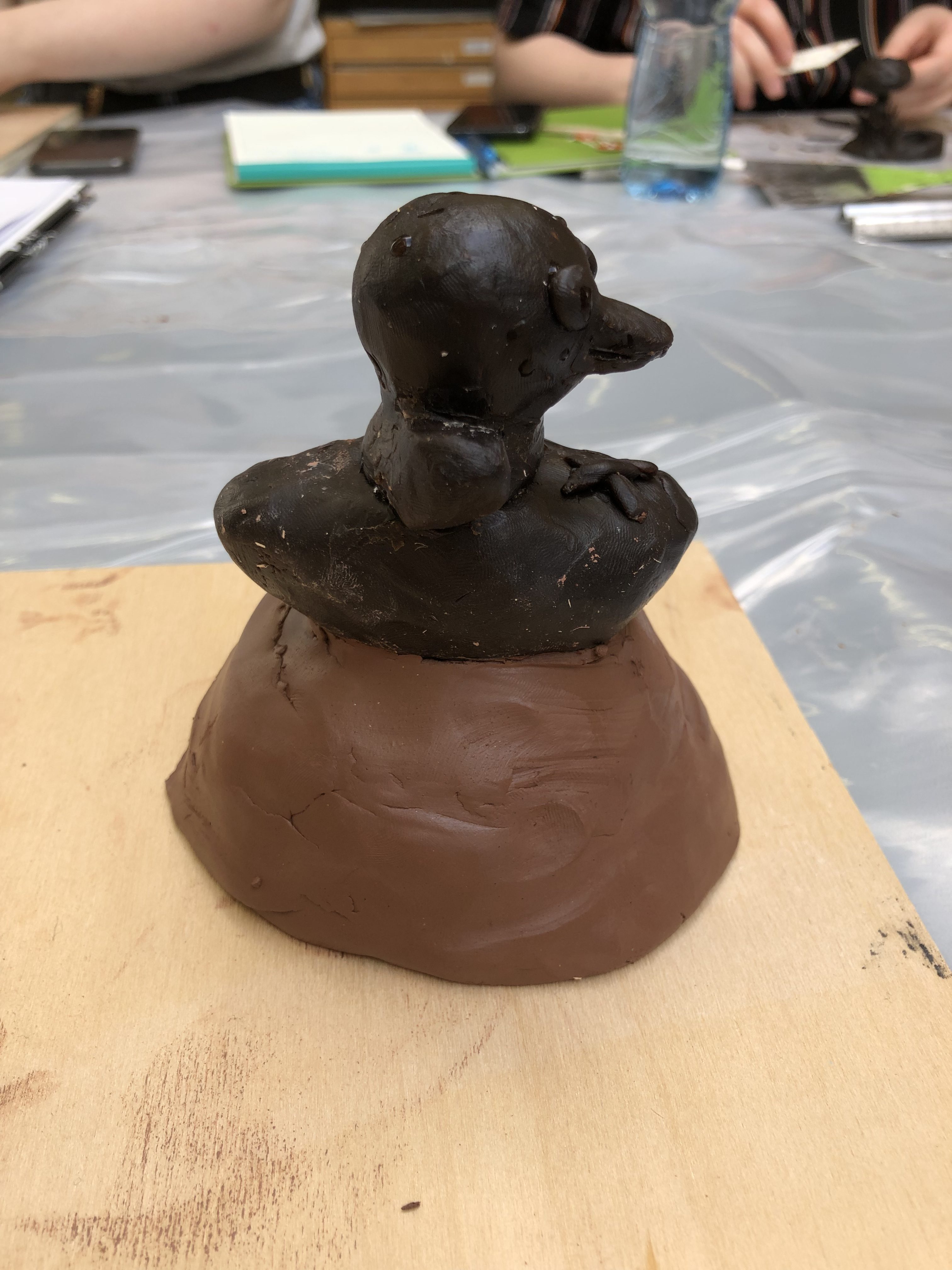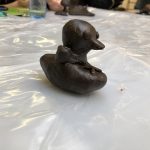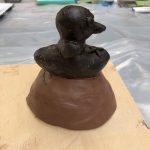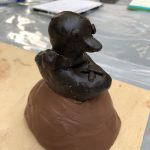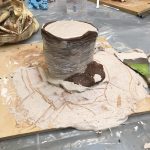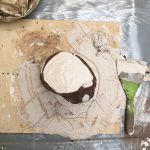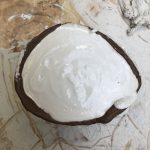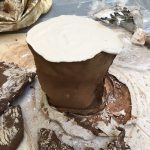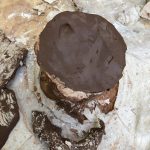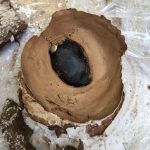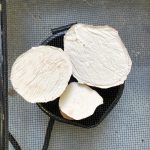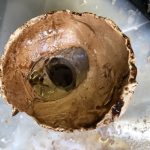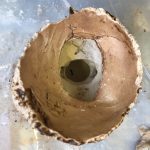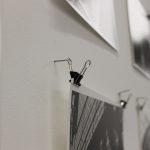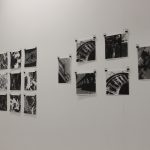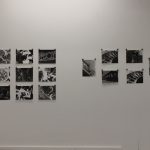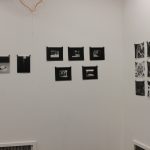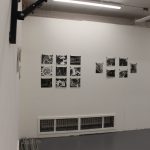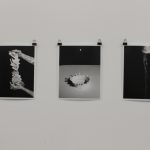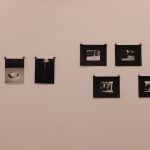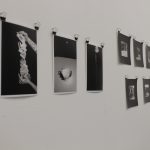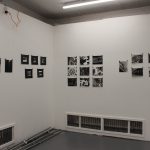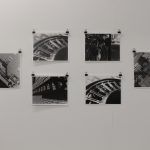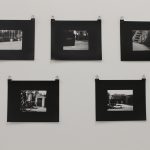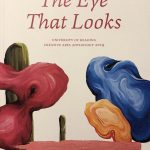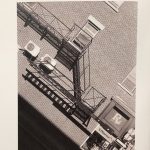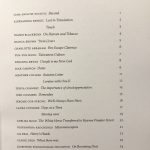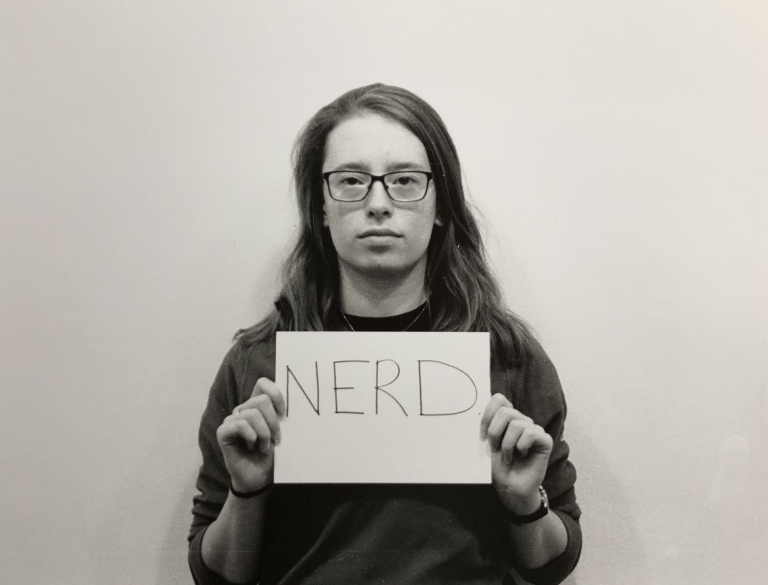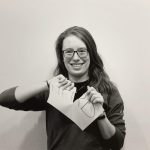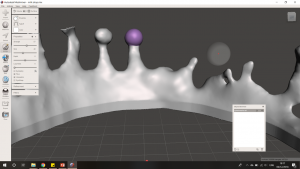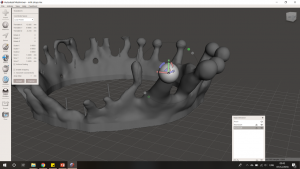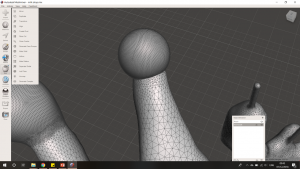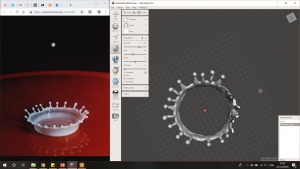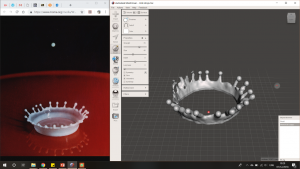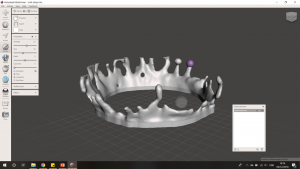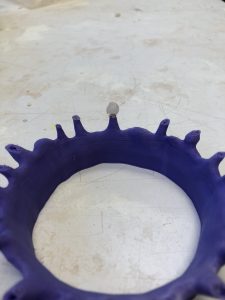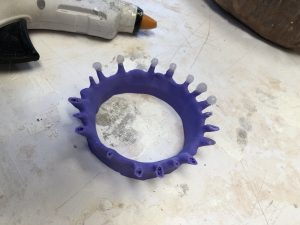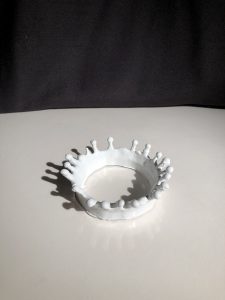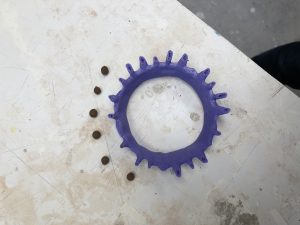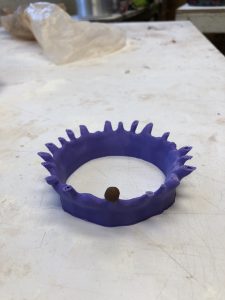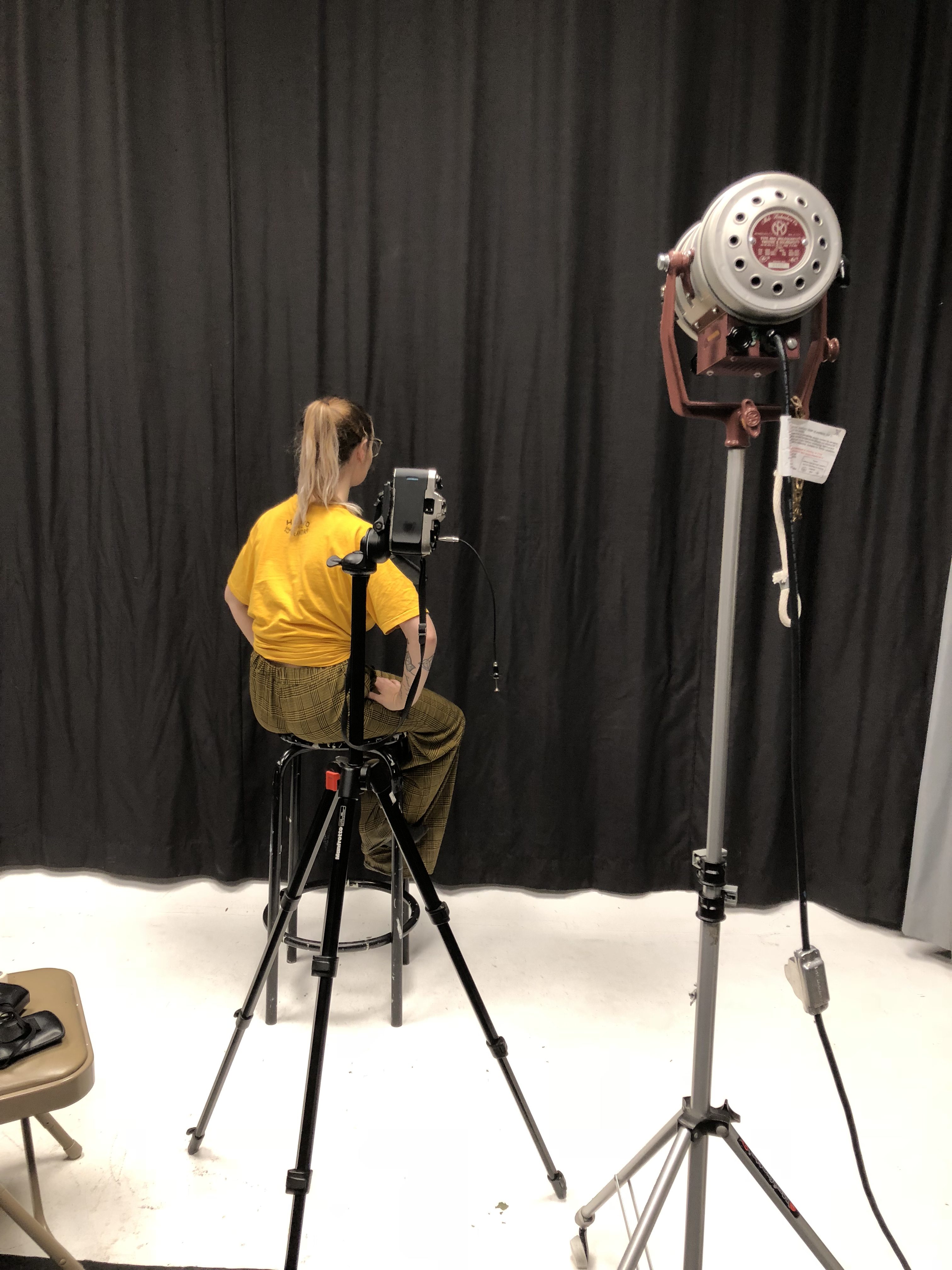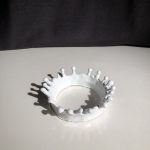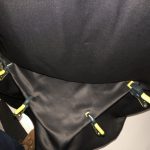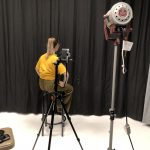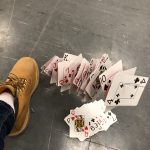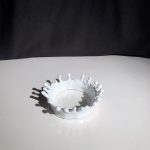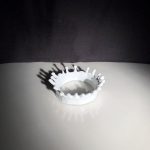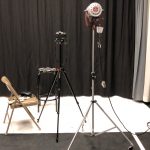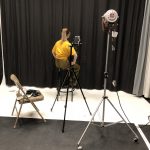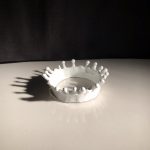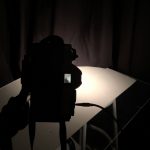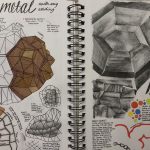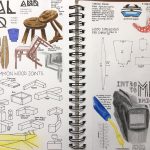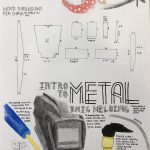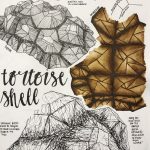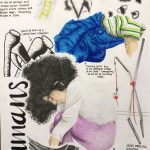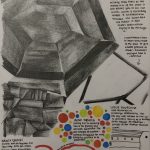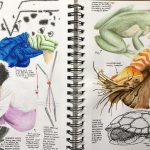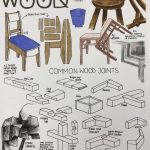The study abroad exhibition was a hit success with works being displayed by Romaisa Bhatti, Celdice James, Hira Syed, Zoë Lee, Christine Glover and myself. We had a wide range of practices coming together in two locations to create a flowing exhibition, showcasing the work done while on study abroad in the previous term. I initially had concerns with my photography pieces being opposite windows due to reflection, however this was a smaller problem than first thought. I also felt that it was wise that I did not frame any of the pieces, as the uniform bulldog clips that I had practised in the exhibition preparation worked well for all of the pieces of work. Overall, I was happy to be part of the exhibition and found it a success. In the future, I aim to be more aware of the flow of people especially when there is work between two locations that are blocked by a locked door.
Glass Casting Workshop Part 1
Th glass casting workshop looked at the lost wax glass casting technique, using the kiln to melt the glass in a pre-formed mould. We started with moulding wax, shaping it into our desired final object. I had inspiration from bath toys, creating a platypus in a kayak. The shape we made is a positive mould, meaning the glass will be in the same shape as the wax. The displacement of the water in the jug shows how much glass we will need in a later step.
The wax then sits on top of a cone of clay, building a wall around it to hold the plaster and flint mix. The cone is used as a pouring vessel for the glass, with the sticks allowing the glass to really get into the smaller areas.
A mix of water:plaster:flint 1:1:1 was used. My walls were not strong enough and split, pouring around half of my plaster mix onto the board. I wrapped the mould in cling film, ensuring that the wall was together, and put clay at the bottom to prevent more coming out. More plaster was then poured in to complete the mould.
The clay dried quickly and I was able to take off the clay walls, and the clay cone came out smoothly, giving a nice big area for extra glass to sit in.
We used steamers to try and get the wax from inside of the moulds, however we were trying to do three at a time which was unsuccessful. Getting the wax out with the steamer one mould at a time was more successful, and was clear once washed out with hot water a couple of times. Once the wax was gone, we measured out the glass using the same water displacement system as measuring the volume of the wax. I ended up with too much glass, but tried to pour in as much smashed glass as I could as I did not mind a base to my piece. These are waiting to be sent of to the kiln, where the glass will melt and get into the details of the mould. We will get these back in a couple of weeks once they are out of the kiln and cooled.
Study Abroad Exhibition Preparation
I decided to set up my assignment pieces from my study abroad in Ottawa to determine whether I liked the idea of bulldog clips to display my work for the study abroad exhibition coming up, and subsequently for the week 8 and final exhibition. I found that it was more successful than anticipated. I was able to put foam between the clip and image to avoid damaging the print, which was successful for many of the prints.
The most unsuccessful parts of this pre-run was the lighting of the area I was in, and the ‘squeezed in’ rushed effect that was produced with the work crowded together. I would have liked to have seen how the frames worked also, however these were too large for the images themselves and the images kept slipping in them. I am going to look for another option before the exhibition and ensure that they are displayed in an area that shows them off, rather than hinders them.
The Eye That Looks – University of Reading Creative Arts Anthology 2019
I was chosen to be part of this year’s University of Reading Creative Arts Anthology, which has for the first time, included visual arts as well as poetry and prose. This years theme is The Eye That Looks, somewhat very appropriate for the piece, Fire Escape Clarence, that I submitted while on study abroad at the University of Ottawa. This piece has been a large inspiration for the current projects of making miniature stairs, and photographing them with black and white film. I was invited to speak about my piece on Monday 11th February within the University, along with others who contributed to this years anthology.
Charlotte Abraham is a current third year Art and Psychology student at the university. She uses a wide range of mediums to make people see everyday objects and scenarios in a way they have never been seen before. Her recent work centres around the practice of black and white photography, shooting and developing all film and photographs herself. While on study abroad in Ottawa, Charlotte was inspired by the cityscape around her and photographed stairs, fire escapes and barriers, placing them vertical and creating the need to see them in the correct orientation.
Name: Fire Escape Clarence
Artist: Charlotte Abraham
Medium: Ilford HP5 Plus 400 Black and White Film on Ilford MGIV RC De Luxe Pearl Paper
Size: 8 x 10″ (20.32 x 25.4 cm)
Artist Statement
The recent collection of presented works from the study abroad term at the University of Ottawa has looked at the exploration of materials, with subsequent ideas stemming from given assignments. Found materials has been a key element within the works, including sieves, wooden chairs and hair. The use of found materials was inspired by both Ben Woodeson and Marc Sparfel who collect items from the streets and gave them homes within sculptures. Sticking My Pieces to You introduced the manipulation and exploration of materials, developing ideas around bodily and world views. Using techniques including two-part and relief moulds, and alginate casts, plaster was manipulated in different consistencies. Through this handling of plaster, a head was formed with found torn maps, a chocolate pot and wire, displaying broken language in a mixed world.
The view of broken language and attempting to see the whole led to the work of Show Me Your Insides, using two children’s chairs and steel rod in a part sculpture of a tortoise shell. The wooden and metal shell, visible from all angles, balanced itself without fixtures, like the work of Ben Woodeson. The piece raised conversation about trying to understand more than what is presented, with the depiction of a natural shell adding to the unknown within the animal kingdom. The plastic chair whales of Brian Jungen inspired the manipulation of the supposed fixed material into something unimagined.
The idea of the manipulation of space and reality was bought into the three photography projects presented at the University of Ottawa. The first, Sans Camera, worked with a homemade pinhole camera and a five-minute exposure time to produce an unknown image. The camera was completely dependent on your positioning and timing, much like objects for photograms in the dark room, to produce a coherent image. The continual manipulation of different objects or negatives was a technique that Oscar Rejlander, the grandfather of photography, used.
Manipulation of reality within photography was especially sought after in Like Nothing You’ve Seen Before which challenged photography of objects unseen before, or in unseen perspectives. New perspectives of already familiar objects were found with the use of 35mm black and white film. This included turning fire escapes vertical in the frame, causing uncertainty of reality within the image. The orientation was inspired by Andrew Wright, whose series of trees puts them back in a vertical position. The final images interact the viewer, whose head wants to turn for the horizon to be flat, but then finds the image looks wrong because the reality is cropped around the stairs.
A cropped and controlled reality with the manipulation of material is finally seen in Emulating History. This project looked at the works of Harold Edgerton, whose invention of strobe lighting allowed people to see the extraordinary in the every day. By using self-designed three-dimensional printing, along with wire and slow shutter speeds, a false reality was created in the final images displayed. The element of false reality in photography confuses those who view it.
VIVA Presentation
At the beginning of Spring Term back at the University of Reading, I presented a VIVA Presentation (PDF), showcasing the artwork and subsequent ideas that were produced on my term abroad at the University of Ottawa.
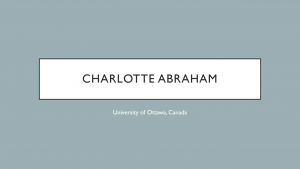
I was to present the artwork created during my two practical modules of sculpture and photography, and the assignments of each.
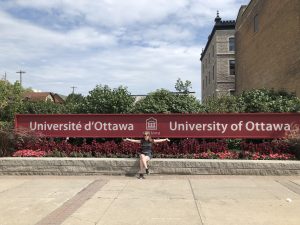
The first photography assignment looked at the process of using the darkroom and objects at different heights from light sources and the photographic paper. There was a play of materials with greater thinking outside of the box to manipulate found objects. Inspiration for this project was Oscar G. Rejlander who is also known as the grandfather of photography. His works manipulate negatives several times to produce new photographs.
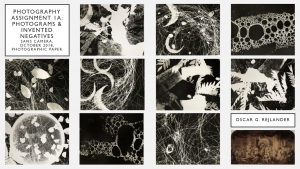
In the first photography assignment, there was also the use of pinhole cameras. Pinhole cameras have the same principles of a normal camera, but you have much more control over each element. You have to manually control the shutter speed and insert the photographic paper (instead of film or an SD card). My own camera had an exposure time of five minutes. Images would come out negative, so we had to use a dark room process for them to become positive photographs. This part of the assignment let me explore the unknown, especially with composition and objects, as well as getting used to the darkroom and the processes within there. If there was a chance to do the project again, I would have wanted to do a wider variety of simple photograms and invented negatives with different materials, as these had worked best. I would also try to get a cleaner developing technique as a streak of black can be seen throughout many of the images.

The second photography assignment we worked with 35mm black and white photography. The brief was to take photos of things you haven’t seen before, or take photos of things in new ways. Not only was thinking of new perspectives challenging, but the process of developing our own film raised concerns within this project too. I felt like I had a small advantage as everything was new to me, but it also stretched my knowledge of SLR cameras and the way in which we can angle ourselves, let alone the camera, to change perspectives. There was also development in the darkroom whereupon I used different filters to reduce the number of greys within the image, which can be seen in the bottom photograph. The techniques of dodging and burning were unsuccessful, however the final images were crisp and clear with a high range of tones.

For this project, I took inspiration from Andrew Wright, whose series of trees are put back in a vertical position.
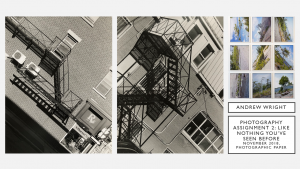
The third, and final, photography assignment emulated and took inspiration from Harold Edgerton, who created strobe lighting and photographed the extraordinary in the everyday. I chose to emulate the milk drop coronet by using a self-designed three-dimensional print of a milk drop. I took inspiration from his everyday photographs to create the cards and the tap. Throughout each image, there is a confusion of reality because of the manipulation of each of the objects. The final display of the images was more professional than previously, adding a sense of completion to the images and project.

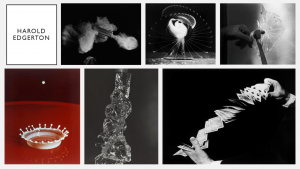
The stereotype series was a response to a call for international students at the university of Ottawa to create artwork that comment on breaking stereotypes. I created a 20 image series that show people aren’t always the label that you give them. This has now been published on the university’s news website. The prints and negatives themselves were not perfect, however the central idea, that people do not live under the stereotypical labels that we may give them, was still projected.
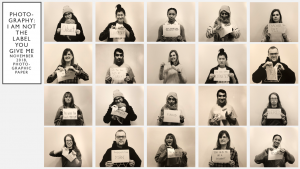
The sculpture module was more of an exploration of materials and how far we can stretch them, and learn from them. Within the plaster project, I used the processes of; two-part mould, alginate, relief mould, and generally handling the plaster in thin and thick consistencies. The head, which was the main part of the project, used found objects and is a result of learning more about the materials and how I was to manipulate it with cardboard, cheese-cloth, wire and cotton wool.
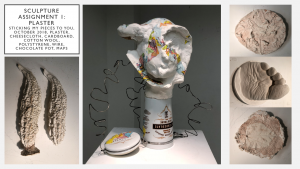
The second sculpture assignment was another exploration of material and process, but this time with wood and metal. I was able to transform two children’s chairs into part of a tortoise shell, using as much of the wood as I could to preserve each part of the chair in a new way. MIG welding was used on metal rods to create the empty section of the shell. It was said by others that in the final piece, there is a clear sense of enjoyment of the exploration of material and process. I was inspired by Ben Woodeson for this project, who balanced glass without fixings. The wood and metal are not fixed together in this piece, creating the sense of fragility.
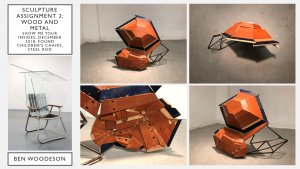
Challenging stereotypes, one label at a time
Recently, in my term abroad at the University of Ottawa, I completed a collection of black and white photographs looking at breaking stereotypes. This work has now been published on the university’s website, along with a small written piece by Robert Greeley, for all to realise that ‘I Am Not The Label You Give Me‘.
“Is Charlotte Abraham a nerd? The third-year international exchange student included herself in a suite of photos titled “I Am Not the Label You Give Me” that challenges us to stop and question common stereotypes.
Abraham, who studied at uOttawa in the fall, recently returned to Britain to complete her degree in art and psychology at the University of Reading. However, toward the end of her semester here, she embraced the opportunity to take part in an exposition, hosted by International House, called “Don’t Feed the Stereotype.” The campaign took a pop culture approach to promoting diversity by debunking stereotypes.
Submissions could be in any medium, so Abraham decided to use the 35mm photography skills she had learned in a uOttawa art class. She loaded her camera with black and white film to create a collection of striking 8” x 10” images.
“‘I Am Not the Label You Give Me’ wants to get those who make stereotypical judgments to think about what they say and how it might affect those they are talking about,” Abraham says. “Pointing out that people are not always the stereotypical labels you give them is just a small step in the march to equality.””
3D Design and Printing
As part of the third photography assignment to copy one photograph from a list of photographers from the first 150 years of photography, I wanted to copy Harold Edgerton’s Milk Drop. This was created using strobe lighting in a darkened room and allowing the film to run through the camera such like a motion picture camera would. This allowed the camera to capture the motion of the milk as it fell through the air and created a splash.
I used Meshmixer, a 3D design tool. I was new to this software, but had to pick it up very quickly to design the milk drop in time to finish my project. I consulted those in the art department that had previously used the programme, and YouTube, for useful videos to help me on this. Instead of producing a design from scratch, I manipulated a design that I found on thingiverse, which I believe made the project easier. I managed to gain a final design by continually looking at the milk drop and aiming to gain the same angles.
The final design was then saved and dragged into Cura, a software I have previously used for 3D printing. The print measuring 10cm would take around five and a half hours. Unfortunately, when I went to collect my print, I found that the 3D printer had struggled, or had simply not printed the top layers where the spheres were. I consulted the technicians in the department, and we decided that I could either use clay, glue gun or a self-hardening putty. I first tried clay, however this kept falling off and extra adhesive wouldn’t stick to the clay itself. I then decided to experiment with a glue gun. This stuck to the plastic very well, and I was able to manipulate the glue in such a way that it looked like the 3D print that I had designed.
The print and glue was then painted with household high gloss paint and once it had dried, was used in the lighting studio for the photography element of the project. Although several things had gone wrong as part of this process, I felt like this was still a good choice of process and material for the object, bringing something new and something old together.
Setting up Cards, Drips and Taps
Using a lighting studio, I was able to use the black curtain in a curved formation to recreate the background of the Harold Edgerton photograph, ‘milk drop’. The light was controlled using a snoot on a spotlight. This technique of the black curtain and snoot on the spotlight was also used with the cards photographs. The tap, on the other hand, required a delicate set up of a black cloth, while two iPhone torches were directed towards the tap and the water. All photographs used a light meter and were taken several times with surrounding settings to ensure a clear photograph.

